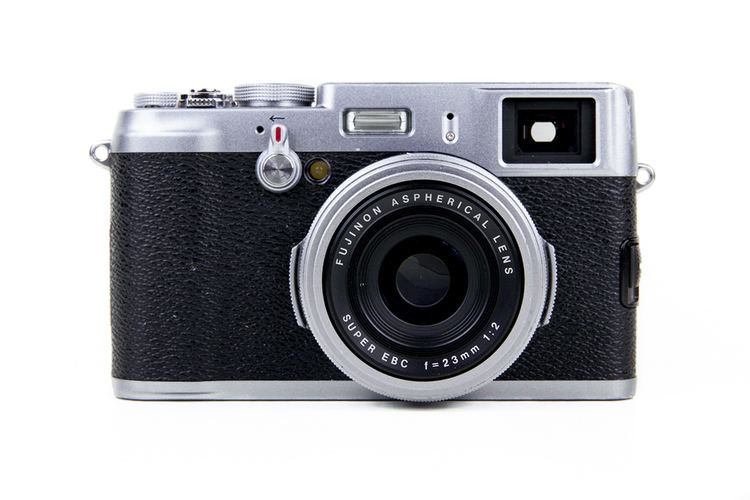Maximum resolution 12.3 megapixels | Lens 23 mm f/2 | |
 | ||
Type Fixed lens digital camera Image sensor size 23.6 mm × 15.8 mm (APS-C) | ||
The Fujifilm X100 series of digital cameras, the FinePix X100, X100S, X100T and X100F, are large sensor compact cameras with a 23 mm fixed prime lens (35 mm equivalent angle of view (AOV) in 35 mm full frame format). All four cameras have received generally positive reviews.
Contents
Fujifilm FinePix X100
The Fujifilm FinePix X100 was initially shown at the photokina show in September 2010 and was subsequently introduced in February 2011. It was the first model in the Fujifilm X-series of cameras and has since been joined by numerous models. It is superseded by the Fujifilm X100S.
Key features
Innovation
The FinePix X100 was the first camera to show a number of new technologies developed by Fujifilm. These include a hybrid viewfinder which allows the user to choose between a conventional optical viewfinder with an electronic overlay, or an electronic viewfinder. The combination of APS-C sized CMOS sensor, EXR processor and 23mm (35 mm equivalent) fast aperture lens was also a first.
Reception
The X100 received generally favourable reviews and a number of awards. These include Innovative Camera of the Year from Ephotozine and Best Premium Camera in the 2011 TIPA awards. In most cases, the prizes were awarded for the combination of technology and picture quality, but the X100 has also received plaudits for its design outside the photography market, coming top of Stuff magazine's Cool List for 2011 and in October 2012 receiving Good Design Award from Good Design Award (Japan). Digital Photography Review gave it a score of 75% and a silver award, noting that it "combines excellent image quality, solid build and a superb viewfinder with somewhat sluggish and quirky operation", adding that "It's been much improved by multiple firmware updates since its initial incarnation, and despite its flaws, is now a very likeable camera indeed.".
Issues
Some X100 cameras have reportedly suffered from 'sticky aperture disease' where the aperture blades lock up, leading to overexposure. Fujifilm has acknowledged this issue and will fix it under warranty.
On initial release the X100 was widely reported to have various issues. Many, but not all, of these issues were fixed through a series of firmware updates made available by Fujifilm.
Fujifilm X100S
The Fujifilm X100S is the successor to the Fujifilm FinePix X100. Announced in January 2013, it is a model similar to the X100 yet addressing some of the issues that the X100 had, and resembles it superficially, but with internal changes. It has been compared with the Leica M series.
It was replaced in September 2014 with the Fujifilm X100T.
Differences from the X100
Reception
The X100S received generally positive reviews:
Fujifilm X100T
The Fujifilm X100T was announced by Fujifilm on September 10, 2014. It is the successor to the X100S. It is visually very similar to the X100S, and shares many of its core specifications (including its lens and sensor), but features numerous iterative refinements and enhancements.
It was replaced in January 2017 with the Fujifilm X100F.
Differences from the X100S
Reception
The X100T has received generally positive reviews:
Fujifilm X100F
The Fujifilm X100F, announced on January 19, 2017 is the successor to the X100T. It features a number of improvements and refinements over the previous model, many of which were first introduced with the Fujifilm X-Pro2. The X100F was released on February 23, 2017.
Accessories
Due to their similarities the different X100 cameras accept many of the same accessories.
